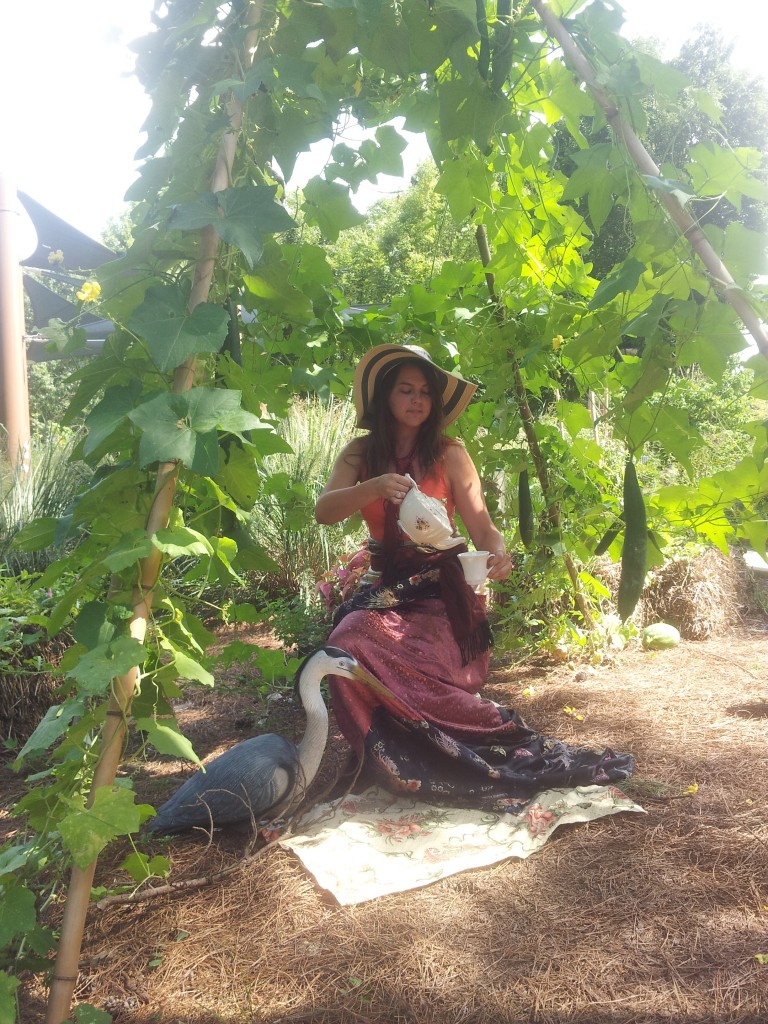Luffa Teepees & Other Uses for Luffa
By Nicki, Youth Programs Developer, Lewis Ginter Botanical Garden
The luffa teepee was constructed and planted by Youth Summer Program volunteers and the Service Learning Program volunteers. The teepee was made with invasive bamboo harvested from the Garden and is held together with a biodegradable twine. It is located in the Youth Display Garden in the Children’s Garden and functions as a showcase for Youth Volunteers to show off their horticulture skills. It’s also is a great shade place to sit and relax, either for teatime or to read a book. I like to play make-believe.
Fun Facts: The luffas can be harvested (wait until a mature size) and dried in the shell (to prevent rot). The luffa reseeds; to collect seeds, just cut it open after it is dried. The fruit can be used as a sponge in the kitchen or as a skin exfoliant. If harvested in a younger stage, it is a common edible in many Eastern countries; in Vietnam, it is eaten in stir-fries or soups and in India and China, it is eaten as a green vegetable prepared for a variety of dishes. In Paraguay, luffas have been used as a construction material for houses!
